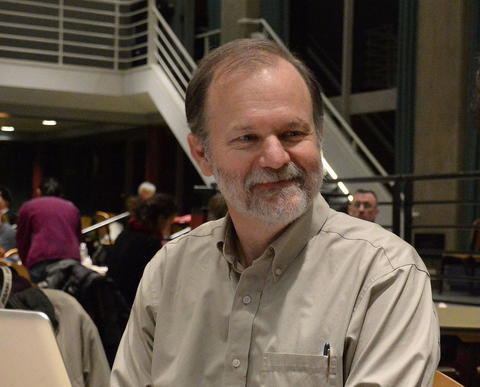
I got hooked on mathematics during high school, from the books by Martin Gardner (the books were collections of his “Mathematical Games” columns in Scientific American magazine). “School math” was not very interesting, but the much wider diversity of topics and challenge in so-called “recreational math” fired my interest. In high school I joined the math team (and found I was pretty good at it), and so resolved to study math in college, not really knowing clearly what that might entail. At Caltech, the freshman calculus class was quite formal, and I didn’t care for it, so when it came time to choose a major, I chose electrical engineering, because I liked to build tangible objects. However, at Caltech, everyone takes lots of math, so I took two years of college calculus, a year of complex analysis, and singular perturbation theory, as well as picking up hefty doses of engineering mathematics through my engineering courses. In graduate school, I discovered that I had a bit of a knack for theory, and enjoyed it very much, putting my mathematical learning to good use. I studied semiconductor lasers and optoelecronics, and the majority of my Ph.D. research was focused on simulation and modeling. Meanwhile, throughout my life (since age six), I had been pursuing origami, the Japanese art of paper-folding, quite avidly, albeit as a hobby. After I graduated with my Ph.D. in Applied Physics and began working at NASA’s Jet Propulsion Laboratory, I started looking into whether I could use the mathematical methods I had honed on laser research to help with my origami designing. Short version: they worked very well, and over the next 15 years or so, I pursued both lasers and origami with similar passion (even though only one of them paid well). And origami grew in my life. By 2001, I had come to a crossroads; I wanted to write a “magnum opus” book about origami design and geometric techniques for design, and had realized that I probably couldn’t write it without focusing on it to the exclusion of much else. So I quit my laser job to first go write a book, and second try to make a go of a career combining origami, mathematics, and engineering. That turned out to work very well indeed. Since then, I have had a most enjoyable and satisfying career working on origami art, science, engineering, and mathematics projects. I’ll be doing this the rest of my life, and will never run out of fun, interesting, challenging, and mathematical things to work on.
